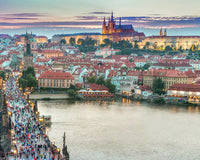Welcome to Hanoi, the thousand-year-old city and vibrant capital of Vietnam! This historic city, rich in culture and tradition and crossed by the Red River, is a real treasure trove for travellers. With its bustling streets, colourful markets and many historic sites, Hanoi offers a unique experience around every corner.
In this guide, we take you on a tour of the must-sees in this fascinating metropolis. Get ready to explore ancient temples, sample delicious cuisine and lose yourself in Hanoi's timeless charm.

Must-sees on a trip to Hanoi
To kick off your trip, here are the best things to see in Hanoi. The city's cultural heritage is spectacular, so pack your bags and let's go!
Hanoi's Old Quarter
Hanoi's Old Quarter, known as the ‘36 Streets’, is the historic centre of Vietnam's capital. Each of its streets is named after a traditional trade, such as Silk Street or Medicinal Herbs Street.
The tube houses, characteristic of the region, are narrow in front but extend in depth, illustrating the local architectural ingenuity. Visitors can :
- stroll through the crowded alleys
- discover craft shops
- buy hand-made clothes
- and sample delicious local specialities such as pho and bun cha.
A stroll through the Old Quarter is free, but you should allow around €10-20 for shopping and meals.
The Ho Chi Minh Mausoleum
The Ho Chi Minh Mausoleum is an impressive monument located on Ba Dinh Square. This marble and granite mausoleum, inspired by Lenin's mausoleum in Moscow, houses the embalmed body of Ho Chi Minh, the founding father of modern Vietnam.
Visits to the mausoleum are free, but it is important to observe the strict rules on silence and dress. Visitors have to queue to get in, but it's well worth it to understand Ho Chi Minh's importance in Vietnamese history. After the tour, explore the surrounding gardens and the Presidential Palace.
A guided tour of the gardens and palace costs around €2.

The Temple of Literature
The Temple of Literature, founded in 1070, is dedicated to Confucius and is considered to be Vietnam's first university.
This complex of temples and pavilions is surrounded by lush gardens and tranquil ponds. The temple's five inner courtyards feature stone steles on the backs of turtles, commemorating former graduates. Visitors can admire the traditional Vietnamese architecture, with its curved roofs and detailed carvings.
The temple is a peaceful place to escape the hustle and bustle of the city. Entrance to the temple costs around €1.50, and a guided tour in English is available for a further €5.
Hoan Kiem Lake
Hoan Kiem Lake, or the "Lake of the Returned Sword," is an iconic spot located in the heart of Hanoi. According to legend, a giant turtle gave a magical sword to Emperor Le Loi to drive out Chinese invaders, then took the sword back and disappeared into the lake.
The red bridge of The Huc leads to the Ngoc Son Temple, situated on a small island in the middle of the lake. This temple is dedicated to a 13th-century Vietnamese general. Entrance to the temple costs approximately 1 euro. In the morning, the lake's shores are a popular gathering place for locals practicing tai chi or exercising.
A walk around the lake is free and offers a panoramic view of the city.
The Vietnam Museum of Ethnology
The Vietnam Museum of Ethnology is a must-visit for anyone wishing to understand the country's cultural diversity. Located in the Cau Giay district, this museum features detailed exhibitions on Vietnam's 54 ethnic groups.
The exhibits include traditional costumes, tools, musical instruments, and religious artifacts. The museum's garden showcases replicas of traditional houses from various ethnic groups, providing an authentic glimpse into Vietnamese rural architecture.
Admission to the museum costs approximately 2 euros for adults and 1 euro for children. A guided tour, available for around 5 euros, enhances the experience with detailed explanations.
Saint Joseph’s Cathedral
Saint Joseph’s Cathedral, built in 1886, is a stunning example of neo-Gothic architecture. Located in the Old Quarter, this cathedral is one of Hanoi's most iconic landmarks.
With its towering twin spires and colorful stained glass, it resembles Notre-Dame Cathedral in Paris. The cathedral is open to visitors every day, and admission is free. Attending a mass, especially the Sunday morning service, provides a unique opportunity to observe local religious traditions and the vibrant Catholic community in Vietnam.
You might consider making a small donation of a few euros to help maintain the church.
The Cyclo-Pousse
The cyclo-pousse is an iconic mode of transportation in Hanoi, offering an authentic and relaxing way to explore the city.
These three-wheeled vehicles, featuring a passenger seat in the front and a driver in the back, allow visitors to navigate bustling streets and enjoy panoramic views without exerting effort. Taking a cyclo-pousse ride is an excellent way to explore the Old Quarter, with its narrow alleys and vibrant markets.
Prices vary, but a typical 30-minute ride costs around 5 euros. The drivers, often locals with deep knowledge of the city, may also share interesting anecdotes and insights about the sights you pass along the way.
When to Visit Hanoi
To ensure an unforgettable trip, it’s important to choose the right time to visit Hanoi!

Spring (March to April)
Spring is one of the best times to visit Hanoi. During these months, the weather is mild and pleasant, with temperatures ranging from 18 to 25 degrees Celsius. Flowers are in full bloom, adding vibrant touches of color to the city. It's an excellent time to explore Hanoi's parks, gardens, and lakes.
Spring also often coincides with traditional Vietnamese festivals, offering visitors a unique chance to experience the local culture. Be sure to book your accommodation in advance, as this season is very popular with tourists.
Summer (May to August)
Summer in Hanoi is hot and humid, with temperatures often exceeding 30 degrees Celsius. Sudden downpours and thunderstorms are common, making some outdoor activities less enjoyable. However, this period comes with the advantage of being less crowded, allowing you to explore the city's attractions without large crowds.
If you visit Hanoi in the summer, remember to stay hydrated and wear light clothing. Air-conditioned museums and cozy cafes provide a welcome escape from the heat.
Autumn (September to November)
Autumn is another ideal time to visit Hanoi. Temperatures are cooler, ranging between 20 and 28 degrees Celsius, and the humidity is lower. The sky is often clear, and the trees are adorned with beautiful autumn colors. It's the perfect season to stroll around Hoan Kiem Lake or visit the Temple of Literature.
Autumn also coincides with the Mid-Autumn Festival, celebrated with colorful lanterns and traditional mooncakes. As in spring, it’s advisable to book your stay in advance due to the high number of visitors during this period.
Winter (December to February)
Winter in Hanoi is cool and dry, with temperatures dropping as low as 10 degrees Celsius. Locals bring out their warm jackets, and the streets take on a different atmosphere, one that is calmer and more serene. While it is the coldest time of the year, it’s also a magical period to explore the city without large tourist crowds.
You can visit local Christmas markets and enjoy warm dishes like pho, which are perfect for combating the chill. Winter is also the season of Tết, the Vietnamese Lunar New Year—a major holiday and a culturally enriching experience for visitors.












